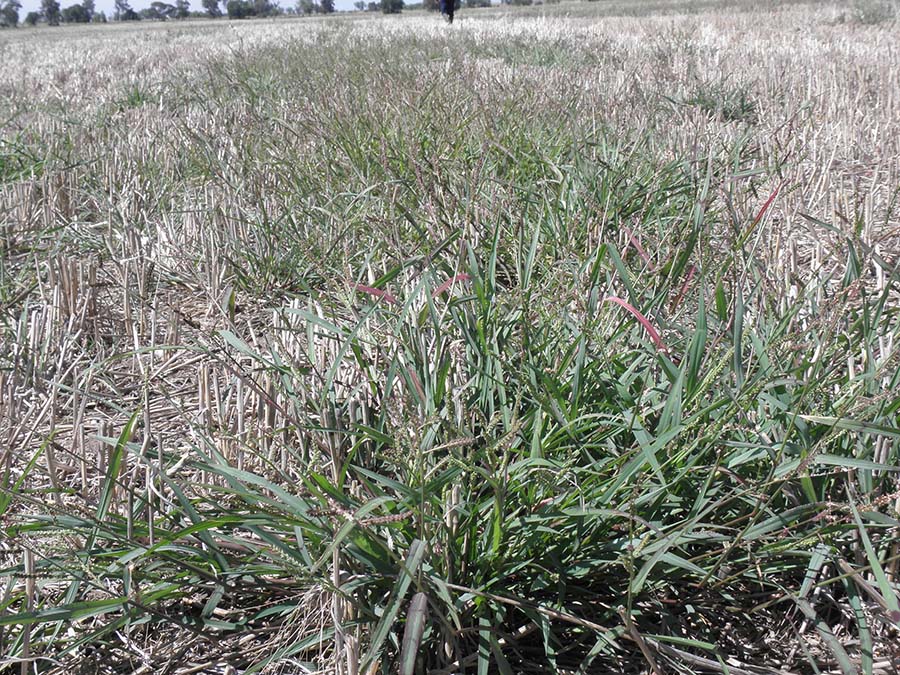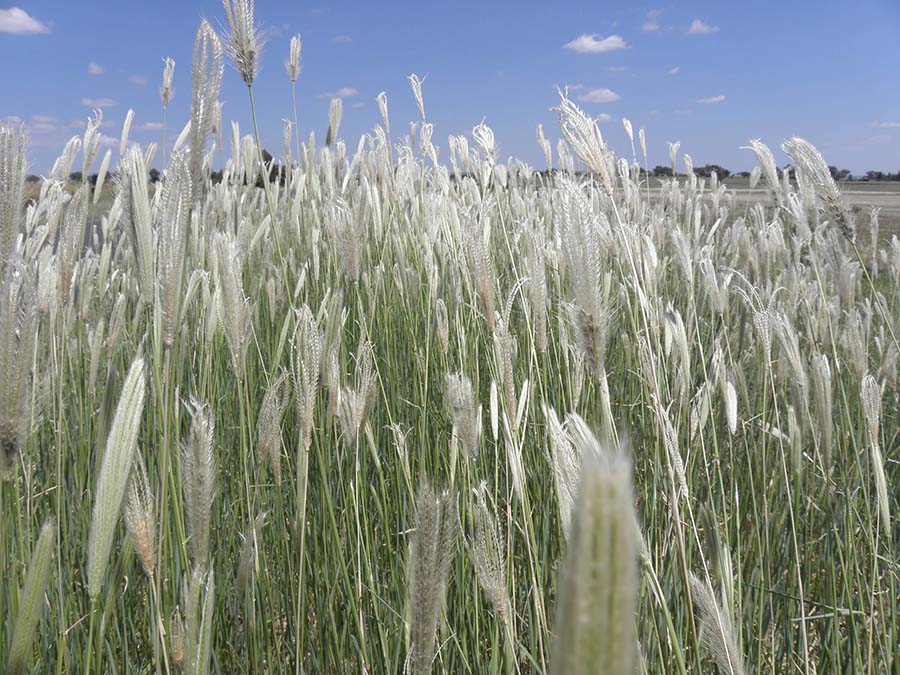Effective control of glyphosate resistant weeds is proving possible using a mix of existing herbicides, with the new application protocols developed by a five-year national GRDC research initiative.
Launched in 2015, the project is led by weed control expert, Associate Professor Bhagirath Chauhan, of the Queensland Alliance for Agriculture and Food Innovation (QAAFI). He works in collaboration with the NSW Department of Primary Industries (NSW DPI).
Associate Professor Chauhan says the overarching goal was to avoid a situation where the soil health and water conservation benefits associated with no-till are threatened by the need to use tillage to control glyphosate resistant weeds.
"No-till farming was developed around the use of glyphosate to control weeds," he says.
"Since 1996, however, we have witnessed many of those weeds that are most problematic to agriculture develop resistance to this herbicide and to do so with increasing frequency.
"Finding effective and sustainable control measures for glyphosate resistant weeds is an issue of national importance."
Targeted by the project are new herbicide treatments for the site-specific management of feathertop Rhodes grass, awnless barnyard grass, fleabane, common sowthistle, brome grass, barley grass and wild radish present in crop and fallow situations.
New protocol

Glyphosate resistant awnless barnyard grass (Echinochloa colona). Photo: Bill Davidson
The most advanced of the new weed control protocols are those for use in the northern growing region to control weeds during the summer fallow.
The method involves rotating a Group A, C and H herbicide in a three-year cycle. However, to achieve full control of the resistant weeds, it was found necessary to add in a Group L herbicide (typically paraquat).
This can be achieved either by mixing the Group C or H herbicide with paraquat in the spray tank, or spraying sequentially in a double-knock.
When applying a Group A herbicide, however, it should not be mixed in the tank with paraquat but rather applied in a double-knock only.
Application rates were based on the manufacturer's recommendations, with the inclusion of different chemical groups in a rotation regime designed to ease selection pressure on weeds to evolve resistance.
The approach is proving successful against glyphosate resistant awnless barnyard grass and feathertop Rhodes grass - the weeds posing the greatest threat to the northern cropping region.
Ongoing work is now validating the glasshouse findings in field trials.
Weeds most problematic in the southern and western growing regions are concurrently under investigation with collaborators at The University of Western Australia and the University of Adelaide.
The focus in the southern region is on alternative options for controlling winter grass weeds. In the western region, work will finalise new treatments to combat wild radish.
Timing
Additional research undertaken by Associate Professor Chauhan has further demonstrated that herbicide efficacy can vary depending on conditions in the paddock and level of moisture in the soil.

Feathertop Rhodes grass, a growing threat to the northern cropping region. Photo: Bill Davidson
This work was based on analysing glyphosate treatment of windmill grass (Chloris truncata).
In discoveries published in Nature Scientific Reports in July, Associate Professor Chauhan found that the efficacy of glyphosate decreases when weeds are moisture stressed in both herbicide susceptible and herbicide resistant biotypes.
In turn, the reduced efficacy can result in sub-lethal doses of glyphosate that promote weeds developing resistance, thereby exacerbating weed control challenges.
"We are already seeing field conditions severe enough to reduce glyphosate's efficacy," he says.
"That means it is becoming increasingly important that moisture stress, as it effects plant health, is considered when making decisions about applying herbicides."
Work is now underway at QAAFI to fully characterise the relationship between moisture stress and herbicide efficacy in fine detail.
The goal is to derive surrogate measures based on soil moisture content and the growth rates of weeds to help growers adjust the timing of herbicide applications to optimise efficacy and minimise the risk of developing resistant weeds.
More information: Bhagirath Chauhan, b.chauhan@uq.edu.au

























































